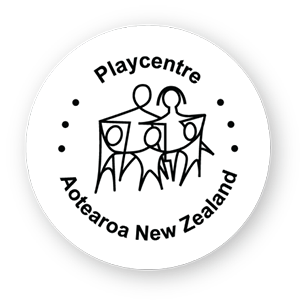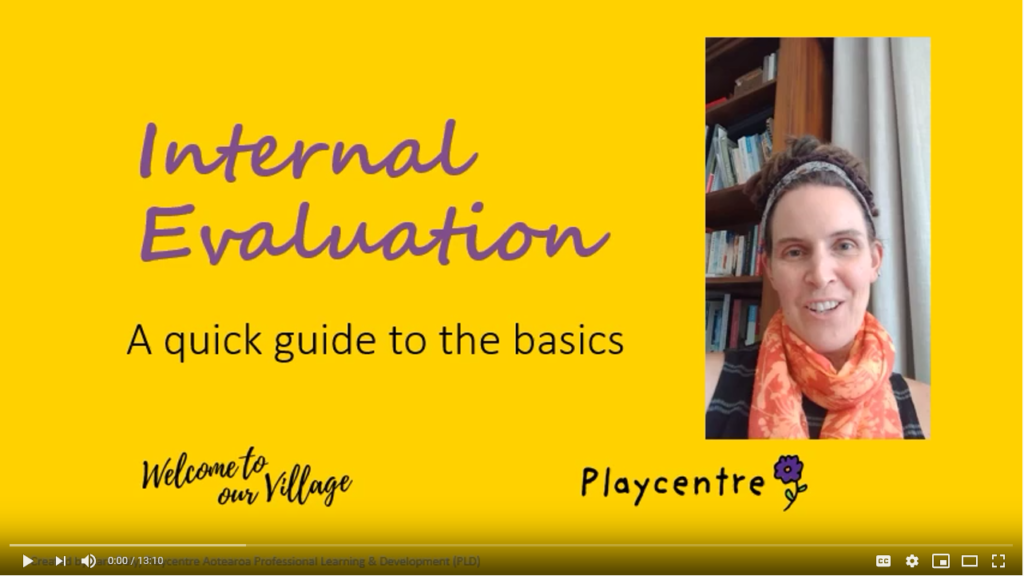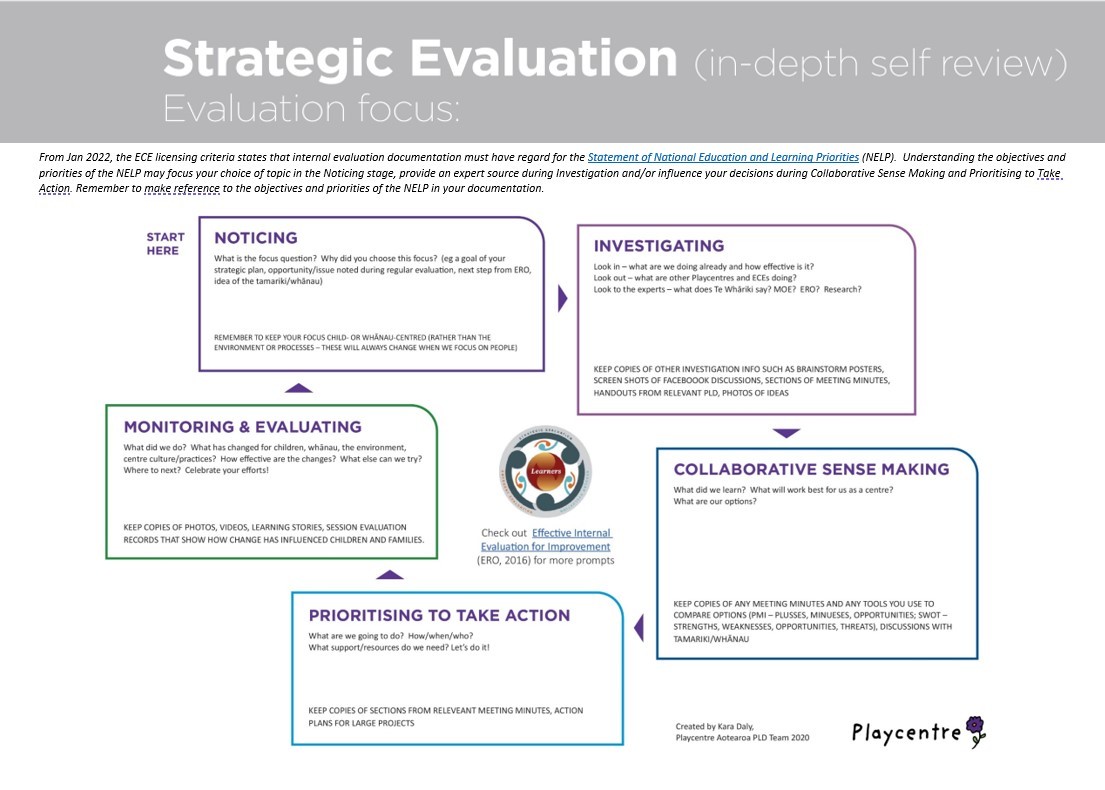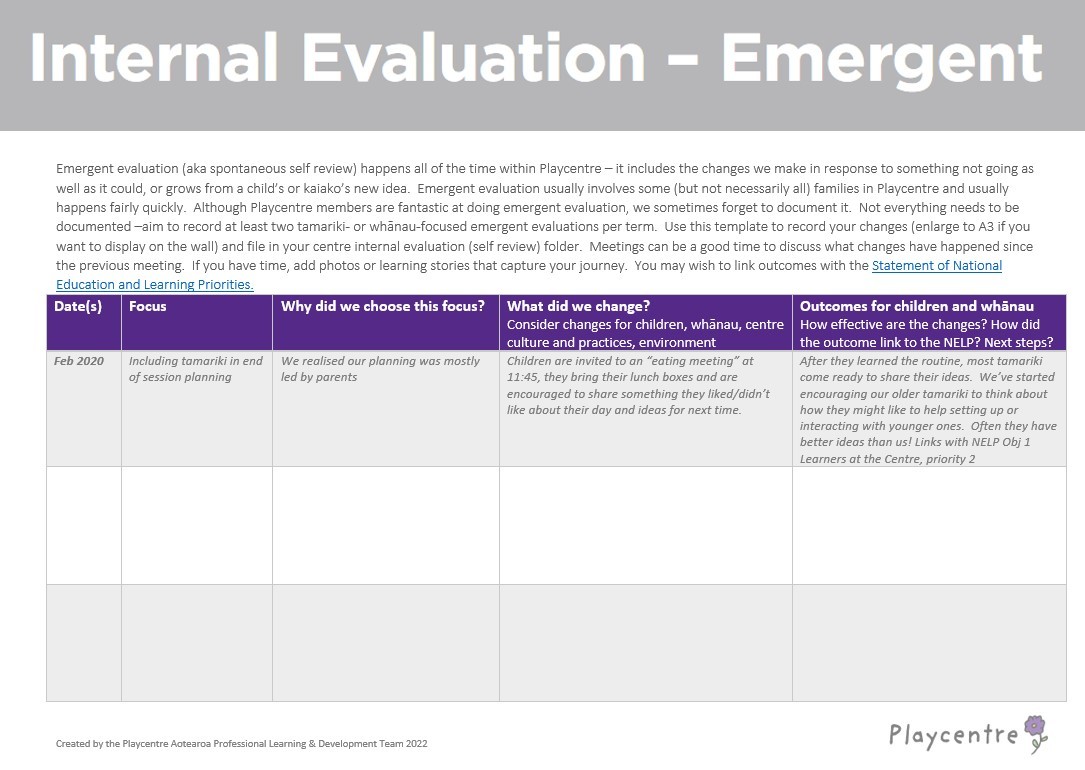Internal Evaluation
There is no escaping internal evaluation (previously known as self reviews). It is an essential part of Playcentre, required by ERO.
Luckily it is also fun, easy, and all about improving our centres for our families.
There is no need to be daunted. You are doing it already every time you think about fixing an issue or doing something better in your centre. There are some new documents out from ERO, which explain the process really clearly. They cover the whole education sector and are not specific to Early Learning. The examples are about schools, but can still give us some ideas.
Common questions about evaluation/review
Who needs to be involved?
Does it have to be about children?
How do we document it?
How long should an internal evaluation take?
What do you mean this is fun?
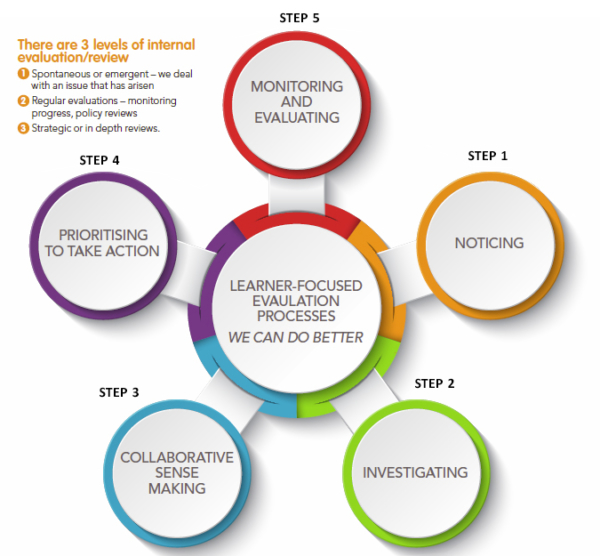
Internal Evaluation has 5 steps
Step 1 the process starts with noticing.
- You may choose a question for review and then start ‘noticing’, or the review may start because you notice an issue.
Step 2 is investigating.
- Remember to look thoroughly at what you already do and how well it works rather than starting by looking for something new. Possible evidence could include parent surveys, child’s voice, session evaluation forms, portfolios, time samples or other observations of sessions, enrolment data, or many other things. Investigate what is considered to be good practice in your area of review. Use ERO and Ministry of Education websites, books, Playcentre Journal, your neighbour centres, Te Whāriki or Playcentre philosophy.
Step 3 is collaborative sense making.
- What have you found out?
- What does it mean?
Step 4 is prioritising to take action.
- What are we going to do?
- How?
Step 5 is monitoring and evaluating.
- What changed?
- Did our plan work?
- How do we know?
- Do we need to change anything else?
- It can help to look at the same evidence you used at the beginning. Redo the photos, surveys, time samples, review portfolios.
- What has changed? The process can be a lot less structured in practice, and that is fine. Sometimes you take action as part of your investigating – will this new idea work? Sometimes you start making sense and decide you actually need to do more investigating. Sometimes you realise that your initial question wasn’t quite right and you need to go back to noticing. Some steps may be long and slow and others quick and easy and this will be different for each review.
For more information
Effective internal evaluation for improvement

